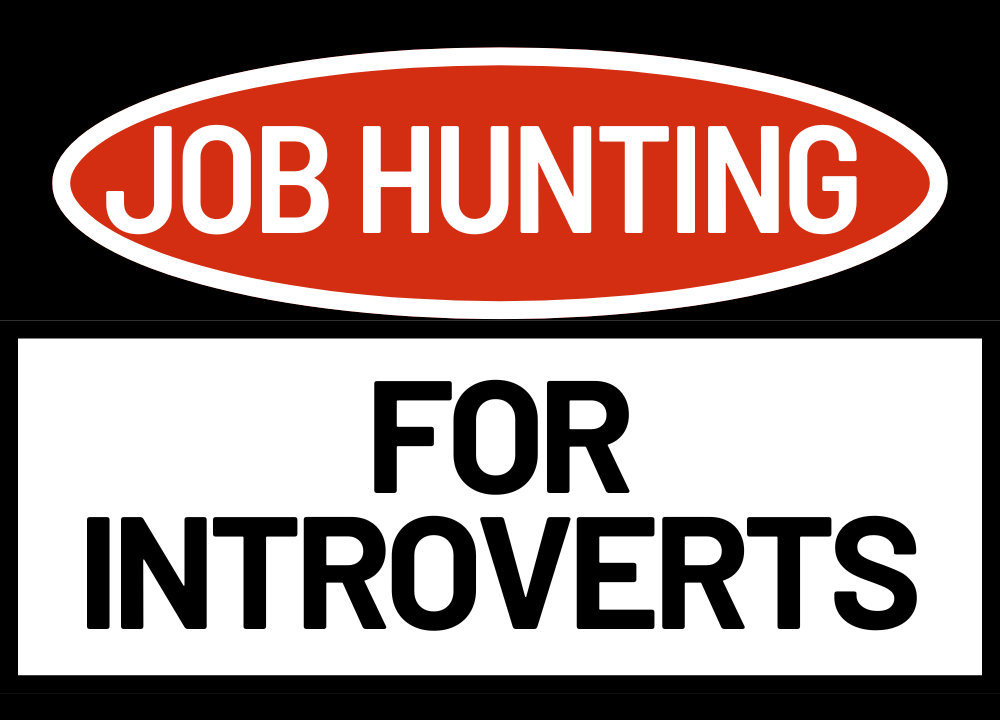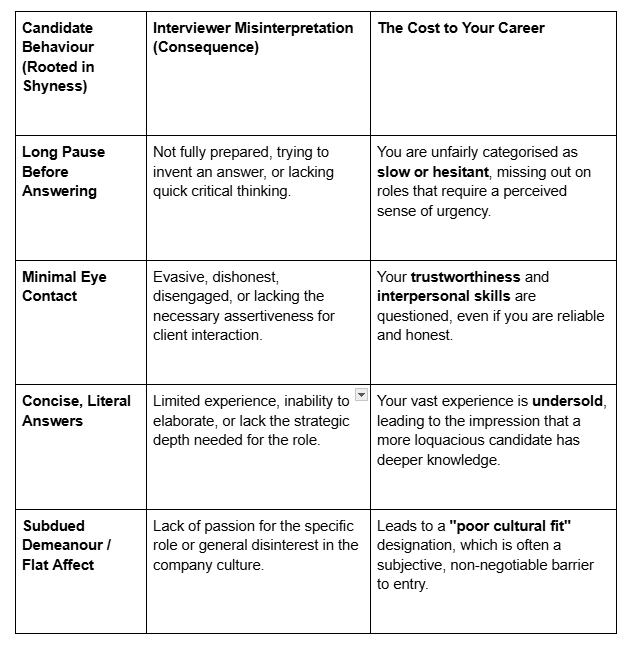The Quiet Achiever's Handicap
Why Your Calm is Mistaken for Disinterest
You know the scenario well. You’re brilliant at what you do—a meticulous planner, a thoughtful strategist, a reliable team player. You’ve spent weeks preparing for that job interview or carefully crafting the presentation for your promotion application. Yet, when the moment arrives, and your mind is focused on delivering accurate, measured answers, a different narrative begins to unfold in the room. Your calm, internal processing is interpreted as a lack of excitement, your reserved body language is mistaken for a lack of confidence, and your thoughtful pauses are read as hesitation. This is the Quiet Achiever’s Handicap: the hidden, painful tax paid by the reflective and socially awkward professional in a hiring process that aggressively rewards superficial signs of extroversion and immediate rapport.
The Misinterpretation of Competence and Interest
In the context of job hunting and internal advancement, the stakes are too high for miscommunication to occur. Recruiters and hiring managers operate under intense time pressure and rely on subconscious social shortcuts to sift through candidates. For the naturally reserved professional, this process is fundamentally biased.
The Unconscious Extroversion Bias
This bias is the unspoken assumption that high-potential employees must be overtly expressive.
The “Energy” Litmus Test: Interviewers often judge a candidate’s passion for the role by their visible energy level. When a shy candidate speaks softly, uses a steady tone, or maintains a physically subdued posture, the interviewer’s subconscious signals, “low enthusiasm.” This is a critical failure in the hiring process, as low enthusiasm is often a fatal flaw on a candidate’s scorecard, regardless of their stellar technical background. The cost is immediate: your genuine, deep interest in the role is overshadowed by the absence of performative enthusiasm.
Confidence vs. Volume: The business world equates leadership and competence with loud, dominant communication. Your ability to calmly and meticulously deliver data or strategic insights is your professional strength, but when delivered with a lower vocal projection or without frequent eye contact, it is often misinterpreted as a lack of self-assurance or an inability to command a room. This can single-handedly derail a promotion application for a leadership role, even if you possess superior managerial skills.
Misreading the Reserved Body Language
The subtle physical and verbal cues of the socially awkward are prime targets for misinterpretation during a performance review or an interview:
The true injustice here is that your reserved approach—your need to be accurate, thoughtful, and measured—is a professional asset that is being penalised as a social liability.
The “Aha!” Moment: Shifting from Performance Anxiety to Intentional Delivery
The realisation that changes your trajectory is this: you don’t have to become an extrovert to get the job or the promotion. You need to become an intentional communicator. Your goal is to manage the audience’s perception in the critical 30-second window when they are unconsciously assessing your confidence and interest. You must consciously add “signposts” to your delivery that ensure your internal competence is externally legible.
The Toolkit: Translating Internal Competence to External Confidence
Here are practical, professional strategies designed to bridge the gap between reserved nature and confident delivery:
1. Strategic Vocal and Visual Anchoring (Professional Setting)
Before an interview or presentation, identify three critical words you will emphasise (e.g., “results,” “strategy,” “leadership”). When you say these words, practice three specific actions:
Project Your Voice: Briefly increase your vocal volume and lower your pitch slightly for that word.
“Hold” Eye Contact: Make brief, sustained eye contact with the listener (or camera) specifically while saying the anchor word.
Use a Decisive Nod: Use a slight, confident nod to confirm your statement.
Result: Your overall reserved manner remains, but your key professional points are marked by sudden, intentional bursts of gravitas and certainty, registering as competence rather than a muted performance.
2. The Power of “Deliberate Processing” (The Pause)
Instead of letting a pause hang awkwardly, use it as a tool to showcase your thoughtful nature.
Verbalise the Process: When faced with a complex interview question, use a phrase that validates your pause: “That is a great strategic question. I’m going to take a moment to structure my answer using the STAR method so I can be thorough.” This reframes the silence as thorough preparation and strategic thinking—a professional asset.
Practice Short Pauses: During rehearsal, practice taking a 3-second deliberate pause before delivering your best points. This not only gathers your thoughts but also creates dramatic emphasis, forcing the listener to pay closer attention to your answer.
3. Pre-scripting Enthusiasm (The Follow-Up)
Since spontaneous enthusiasm is difficult, script your enthusiasm where it matters most: in the follow-up.
The Intentional Email: After a high-stakes meeting or interview, send a thank-you email immediately. In this email, reiterate your interest using deliberate, enthusiastic language you’ve pre-drafted. Example: “I was especially energised by our discussion regarding the new expansion project. My experience in [Skill X] directly aligns with solving the challenge you mentioned about [Specific Problem].”
The Second Chance: This written enthusiasm serves as a valuable correction mechanism, overwriting any muted impression you might have left during the face-to-face interaction. It ensures your passion for the work is clearly understood.
Personal Connection: Building Rapport Through Validation
This approach works personally, too. If you are naturally quiet at a dinner party, choose one or two moments to deliver a structured, well-thought-out opinion, using your voice and eye contact to punctuate your point. Then, balance this with active listening, using warm, nonverbal cues (such as nods and a focused gaze) to validate the person speaking. You become known as the thoughtful listener with incisive opinions, rather than the quiet person in the corner.
Conclusion
Your competence is not in doubt, but its visibility is your responsibility. The Quiet Achiever’s Handicap is overcome not by shouting, but by strategically amplifying your voice at key moments. By being intentional with your delivery, verbalising your reflective process, and strategically scripting your enthusiasm, you ensure that your calm demeanour is correctly interpreted as gravitas and confidence—not coldness or disinterest.
Your Next Step: Choose one key professional interaction this week (a 1:1 with your manager, a project update meeting, or an interview) and intentionally use a “Deliberate Pause” before answering the most important question. Practice saying, “That requires a thoughtful response; allow me a moment.” Observe how the receiver reacts to your intentional pause.




